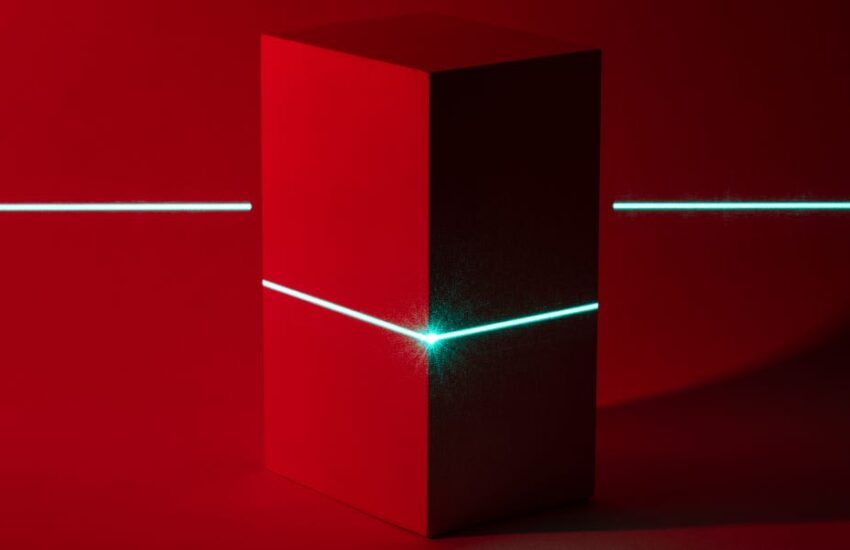- We’ve reached the limit of a very successful way to make new elements in the lab.
- In new research, scientists unveil a new take on that technology and report its success.
- The heaviest elements could have new uses and properties we haven’t dreamt of.
Lawrence Berkeley National Laboratory has announced a new way to reliably make element 116, livermorium. The results, made by using a titanium beam to irradiate a sample, could point toward the elusive “island of stability” for even heavier nuclear elements—and show researchers a route to create the next feasible element, number 120.
Many of us remember a time when the periodic table appeared with some curious blank spots. Your age determines what those blank spots were, but they’ve been consistent, because discovery of elements has never been in full numerical order. Their availability has depended on location, stability, and accessibility of both the naturally occurring forms and a method to separate them.
After a certain point, the elements transition from naturally occurring to laboratory-prepared. These elements may exist somewhere in the universe, but Earth is not cold enough, high-pressure enough, and so forth to create those conditions outside a lab. But inside labs like Berkeley, they use increasingly advanced technologies to jam more protons inside the nuclei of atoms in order to create these new elements.
In their new preprint paper—meaning it’s not yet peer-reviewed—a large team of scientists explain that we’ve reached the limits of a current generation method to make new heavy elements. The heaviest discovery to date, element 118 oganesson, was made using a beam of calcium isotope 48 particles. Calcium 48, with its definitive 20 protons plus 28 neutrons, is a common and very effective starter for physical chemistry.
At the same time, we’ve now run out of materials to beam Calcium 48 into in order to produce new elements. While it’s true that we only need to keep pumping protons into existing nuclei, the atoms we start with need to have a lot of protons in order to support that reaction. To make elements 119 or 120, the researchers explain, they’d need einsteinium (99) or fermium (100). “Unfortunately, neither of these elements can be produced in sufficient quantities to produce a suitable target,” they write.
So, what’s a super heavy element enjoyer to do? The next big thing in physical chemistry, it seems, is titanium.
Titanium 50 has 22 protons plus 28 neutrons and is very stable. These scientists brought it in as titanium 50 oxide, reduced it to just titanium, and then cooked it into a beam of ions using a special oven. Over a period of 22 days, the beam irradiated a plutonium foil and triggered the nuclear reactions that create element 116, livermorium. The researchers were pleased with how well the beam held together and performed.
The titanium 50 beam is proof of concept after a period of intensive research and experimentation. If heavy element chemistry were a sports franchise, they won the world championships with calcium 48, and then had to take time to rebuild after everyone retired. Now, a new generation of players is ready to take over full time. The titanium 50 beam has new benefits and drawbacks, and its potential is even better in the long run.
You may wonder why these heavy elements are worth all this exploration and experimentation. The thing is, we just don’t know yet what might happen when using these extraordinary and strange elements. Scientists want to find out, and that research could reveal properties and use cases we can’t even dream of today—but we can only make a few atoms at a time, and they last for just microseconds before the protons spray back out of the nucleus. It’s impossible to do further research.
For decades, scientists have predicted the existence of an island of stability in the extended catalog of elements and their isotopes. Cramming nuclei full of protons is inherently unstable because the protons act like the wrong ends of a magnet, but the island of stability may hold isotopes that last far longer without decaying. There are scientific explanations for this, including theories about layers of particles in the nucleus, and “magic numbers” of protons and neutrons that may be stable in combination.
If we can find stable super heavy elements, scientists may be able to make much larger samples that can be subjected to more rigorous experimentation. Elements have always had the capacity to surprise us, like mercury, which is a liquid metal at room temperature; bismuth, which always repels magnets; and copper, which is responsible for almost a rainbow of naturally occurring colors by itself.
What’s the mercury or bismuth of the super heavy elements? We can only find out once there’s enough to play with. The titanium 50 beam, or something similar inspired by it, could unearth the next half dozen elements—and one or more could be our stable holy grail.

Caroline Delbert is a writer, avid reader, and contributing editor at Pop Mech. She’s also an enthusiast of just about everything. Her favorite topics include nuclear energy, cosmology, math of everyday things, and the philosophy of it all.

